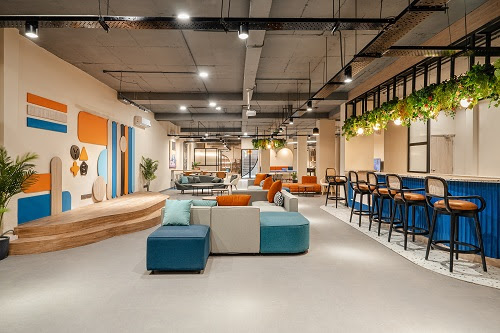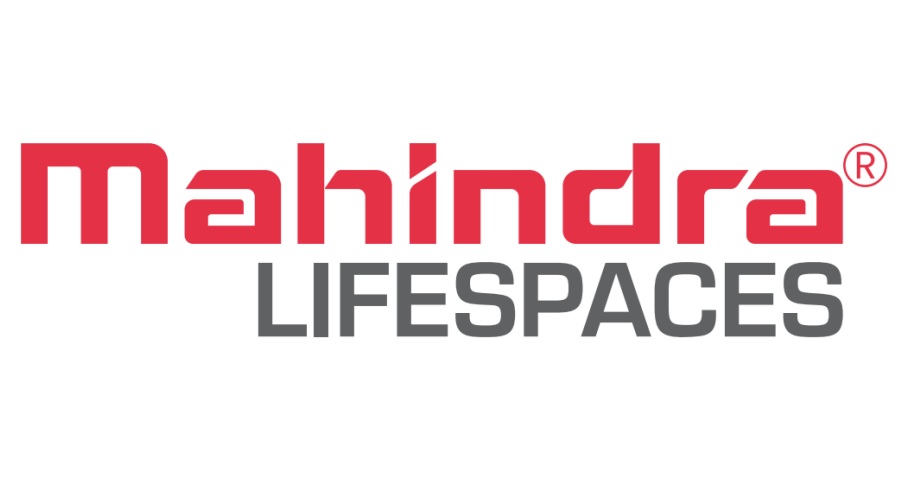 E-Zest Office
Technology & Sustainability
For an office a basic requirement would be to cater to its technological and IT considerations while laying out workspaces since all offices work on linked networks. The standard set of cables and server rooms becomes an eminent part when deciding about the placement of the furniture in the office. The inlaid wiring within carpeted flooring gives a much cleaner and finished look.
Eco-friendly component too is imbibed through the design. Furniture is made with minimal wastage and the materials used are also decided after a thorough research process on the various ways in which they would be feasible and would cause the least negative impact on the environment.
Lighting plays a key role in the design process since the conception until its execution. A maximum use of daylight is attempted to save energy and the lights are also designed in a meticulous way according to their optimum need and requirement. The luminance and warmth of the light is decided based on the placements and area of use.
Acoustics is accurately mapped and designed in commercial spaces since the sounds need to be absorbed and reflected in the right manner. One has to be conscious about the acoustical quality of materials used for the walls, ceilings and floors to make sure the sounds do not over-echo or are under heard.
Efficient HVAC is a necessary element to maintain good indoor air quality. From the appropriate vents sizes to cooling the corners, we make sure that all the necessary standards are met, if not already existing in the building, and are provided correctly for the users.
E-Zest Office
Technology & Sustainability
For an office a basic requirement would be to cater to its technological and IT considerations while laying out workspaces since all offices work on linked networks. The standard set of cables and server rooms becomes an eminent part when deciding about the placement of the furniture in the office. The inlaid wiring within carpeted flooring gives a much cleaner and finished look.
Eco-friendly component too is imbibed through the design. Furniture is made with minimal wastage and the materials used are also decided after a thorough research process on the various ways in which they would be feasible and would cause the least negative impact on the environment.
Lighting plays a key role in the design process since the conception until its execution. A maximum use of daylight is attempted to save energy and the lights are also designed in a meticulous way according to their optimum need and requirement. The luminance and warmth of the light is decided based on the placements and area of use.
Acoustics is accurately mapped and designed in commercial spaces since the sounds need to be absorbed and reflected in the right manner. One has to be conscious about the acoustical quality of materials used for the walls, ceilings and floors to make sure the sounds do not over-echo or are under heard.
Efficient HVAC is a necessary element to maintain good indoor air quality. From the appropriate vents sizes to cooling the corners, we make sure that all the necessary standards are met, if not already existing in the building, and are provided correctly for the users.
 MMRDA Head Office
Space Design Execution
The workmanship available and the variety of local and international materials available can influence the design and its outcome to a large extent. Working on strict timelines and meeting the client’s requirements at various stages of the project can be intimidating. The commercial interior design space is bringing innovation and fresh concepts on the table at a fast rate. Digital innovations have changed the approach to accessibilities requiring automation in all the required spaces.From the overall layout to the work desk mechanisms and a cohesive design approach the commercial interior designs are changing every day. This requires designers to constantly strive to keep up with the times.
New ideas such as development of co-working spaces and its counterparts are rapidly coming up in the cities. Also, methods of working are drastically changing due to digital advancements.
MMRDA Head Office
Space Design Execution
The workmanship available and the variety of local and international materials available can influence the design and its outcome to a large extent. Working on strict timelines and meeting the client’s requirements at various stages of the project can be intimidating. The commercial interior design space is bringing innovation and fresh concepts on the table at a fast rate. Digital innovations have changed the approach to accessibilities requiring automation in all the required spaces.From the overall layout to the work desk mechanisms and a cohesive design approach the commercial interior designs are changing every day. This requires designers to constantly strive to keep up with the times.
New ideas such as development of co-working spaces and its counterparts are rapidly coming up in the cities. Also, methods of working are drastically changing due to digital advancements.


















